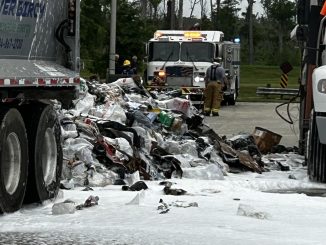
St. Charles Parish refineries are among those nationally affected by the U.S. Environmental Protection Agency’s new tighter air emission rules aimed at cutting contaminants.
EPA Administrator Gina McCarthy called the rule “a kind of neighborhood watch for refinery pollution.”
The updated Clean Air Act standards target about 150 oil refineries across the nation, strengthening standards on storage tanks, coker units, pressure relief devices and flares, which burn off excess gases. The EPA says the measures are designed to reduce emissions that cause respiratory illness, increase cancer risk and contribute to smog and global warming while making refinery operations more efficient.
The American Petroleum Institute (API) disputed the move, saying companies have already spent billions of dollars to reduce emissions and that air quality has continued to improve because of voluntary programs and existing regulations. The API maintains refinery air emissions were already at safe levels and have been declining under existing regulations.
Valero Energy deferred comment to the American Fuel & Petrochemical Manufacturers (AFPM).
“This conclusion demonstrates that the refinery hazardous air pollutant reductions have proven effective,” said President Chet Thompson. “We therefore are disappointed by EPA’s decision to require additional expensive new emissions controls that provide little incremental health benefits.”
AFPM will review the rule, “and our next move will be dictated by our findings,” Thompson said.
The API further argued the new EPA rule could cost the refinery industry up to $1 billion for compliance by 2018.
The EPA maintained the compliance figure would be closer to $283 million, a total it maintained would have “no noticeable impact” on the cost to petroleum products.
The agency has targeted contaminants, including benzene, toluene and xylene, be reduced by 5,200 tons per year, which is aimed at reducing cancer risks for more than 1.4 million people.
Of the 150 refineries impacted by the new rule, the list includes at least 15 Louisiana refineries, including Motiva Enterprises facilities in Norco and Convent; ExxonMobil Oil Corp. refineries in Baton Rouge and Chalmette; Marathon Petroleum Co. LP, Garyville; Valero Refining in Norco and Meraux; Phillips 66, Belle Chasse; Placid Refining Co., Port Allen, and Alon USA Refining, Krotz Springs.
For the first time, refineries are required to monitor and report benzene levels, a cancer causing compound, at the boundaries of their property and cut emissions.
Calling it “fenceline monitoring,” the EPA will require refineries to encircle their facilities with one to two dozen canisters that continuously sample air for benzene.
The EPA was required to issue the long-delayed rules under a court-ordered consent decree with environmentalists and community groups in California, Louisiana and Texas, who sued the agency in 2012 for missing deadlines.
One of those groups was the New Orleans-based Louisiana Bucket Brigade that argued the EPA had violated federal law by failing to update rules requiring the use of “Maximum Achievable Control Technology” by refineries.
The Bucket Brigade issued reports for several years outlining toxic emissions released during accidents at refineries in the state, with much of the releases being funneled from process facilities during startup and shutdown operations to flares that are supposed to burn the chemicals to reduce the amount released into the air.
The EPA estimates more than 6 million people live within three miles of a refinery.
The American Lung Association’s State of the Air 2015 report graded St. Charles Parish’s air quality with a “B.”
According to McCarthy, “This rule delivers on EPA’s commitment to environmental justice by reducing toxic air pollutants that impact families living near refineries by requiring, for the first time ever in an EPA air rule, monitoring of emissions at the fenceline, and corrective action if standards are exceeded.”




Be the first to comment